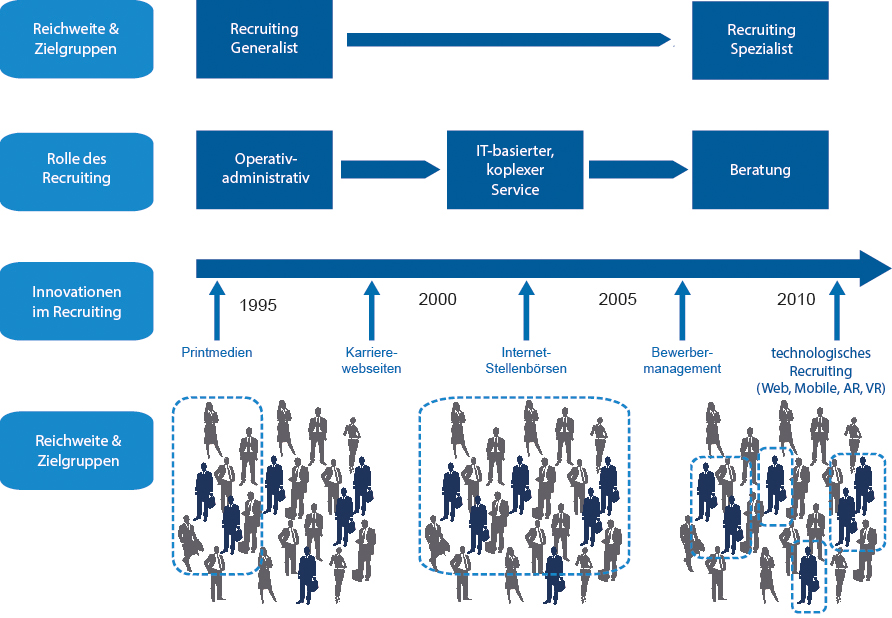Internet, whether on the computer or via mobile devices, is an integral part of today’s world. Today it determines not only how we consume news, navigate the world, but also how we communicate. It is not surprising that recruiting can no longer be imagined without it.
 .
.
There has been a considerable increase in the number of applicants approached using web applications over the past few years. Technological developments have made it possible for employers to network more effectively and globally with potential employees. The development of interactive e-recruiting began in the mid-1990s, when the first companies uploaded job advertisements to their website. But with the establishment of these first online advertisements, a steady development took place on the companies’ career portals. While in the past it was sufficient to simply place the job advertisement on the website, more and more information was requested from the candidates. Towards the end of the 1990s, the range of career websites was supplemented by Internet job exchanges. These finally enabled the companies to address the applicants more specifically, which at that time was not yet possible via their own platforms.
Transformation of recruiting
Classical, operationally-administrative recruiting, which could only reach a small number of potential qualified applicants, has developed into a complex, IT-supported process that can manage a large number of applications. The evolution in e-recruiting did not stop at the personnel managers either. From the Recruiting–generalists of yesterday, the “Recruiting Specialist 2.0” developed. Today, a human resources department can no longer wait for a vacancy to arise, but ideally it will proactively approach qualified applicants in order to recruit them for the company. It is not enough to wait any longer, the recruiter is nowadays a true toolbox of possibilities. He must know all recruitment opportunities and be able to use them. From social media to video, from Mobile Recruiting to applicant search at the POS or at trade fairs. He must have a clear vision of his market, industry and business so that he can find the perfect candidates and actively support his superiors and partners. The HR consultant of today is no longer a service provider as he used to be, he is a consultant.
The basic prerequisite for this is that today’s recruiter understands and can handle all web-based applications (blogs, social networks, wikis). But he also knows the technologies of the future, which would fascinate candidates for the vacancy in particular. Recruiting campaigns on Virtual Reality and Augmented Reality are also available on the market today.
General Mills recruiting millennials with virtual tours (Source: FOX 9)
He also knows how to put himself into his company, his industry and his target group. If he or she is able to do so, he or she can address applicants to the exact target group and thus filter out exactly those candidates who offer the highest degree of matching potential with the requirements of the new employee. In the practical implementation of an online recruitment strategy, various disciplines of e-recruitment have evolved over time, and successful recruiters consistently align their daily activities with them.
Today’s HR manager must always stay in tune with the times and himself must be a little innovation manager , albeit for his specialty.

